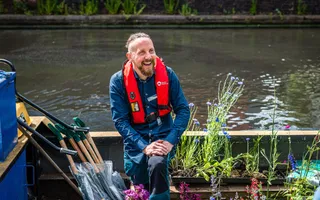Water mint facts
Scientific name: Mentha aquatica
Family: Lamiaceae
Origin: Native
Type: Perennial
Water mint and our canals
Water mint grows in shallow water and boggy places at the edges of canals, rivers, lakes and ponds. It can be easily identified by the characteristic minty smell that permeates the air around areas it grows, particularly early in the morning.
This perennial is beneficial for our canals as it acts as a natural filtration system by absorbing excess nutrients and pollutants from the water. Its roots can also remove toxic algae and heavy metals.
Appealing to bees and other pollinators, water mint encourages wildlife to our waterways and helps improve ecosystems. Butterfly species such as small tortoiseshell, peacock, and comma are big fans.







